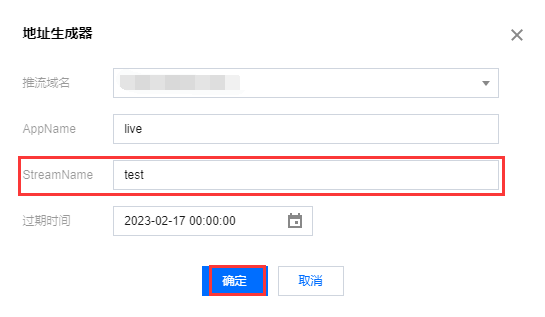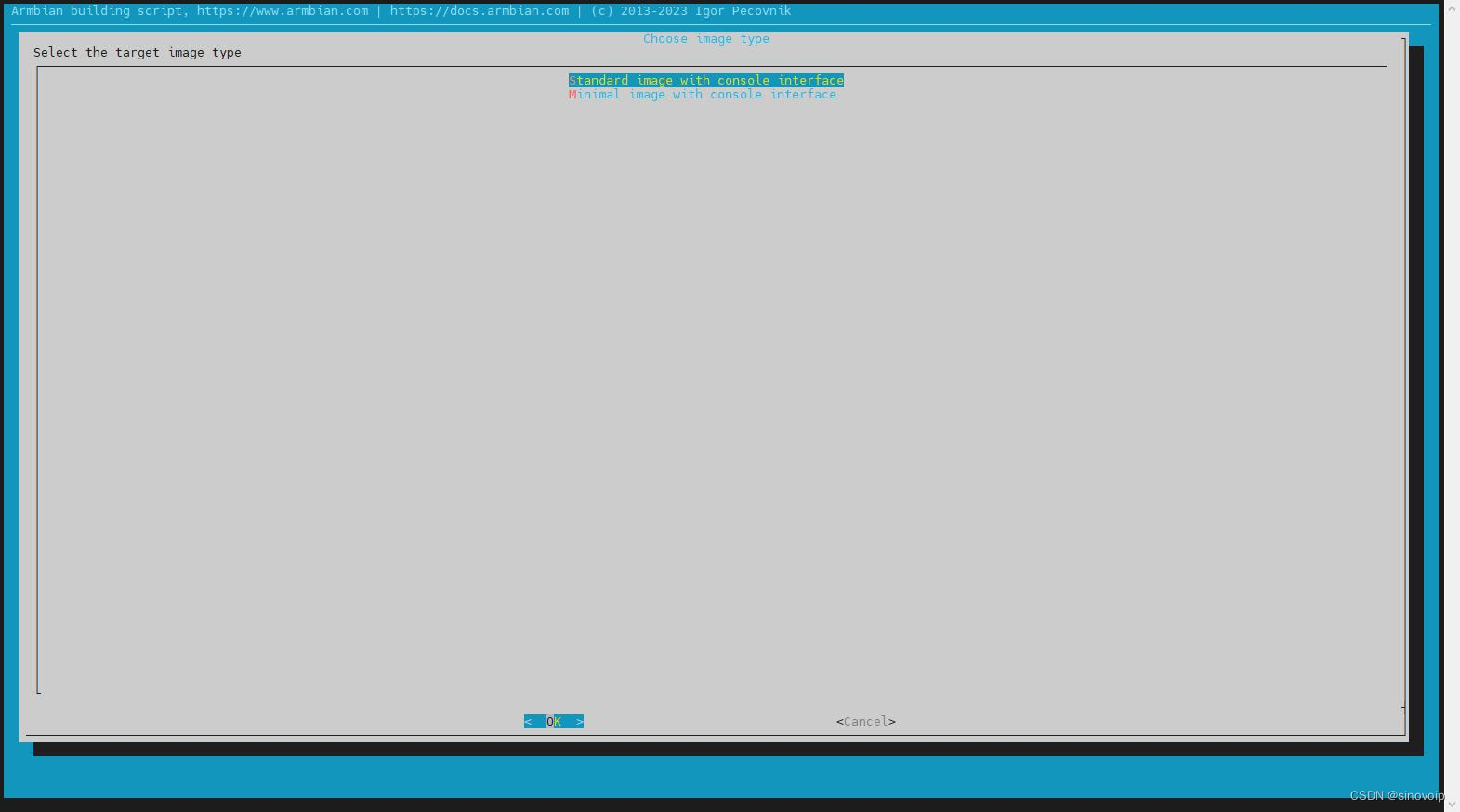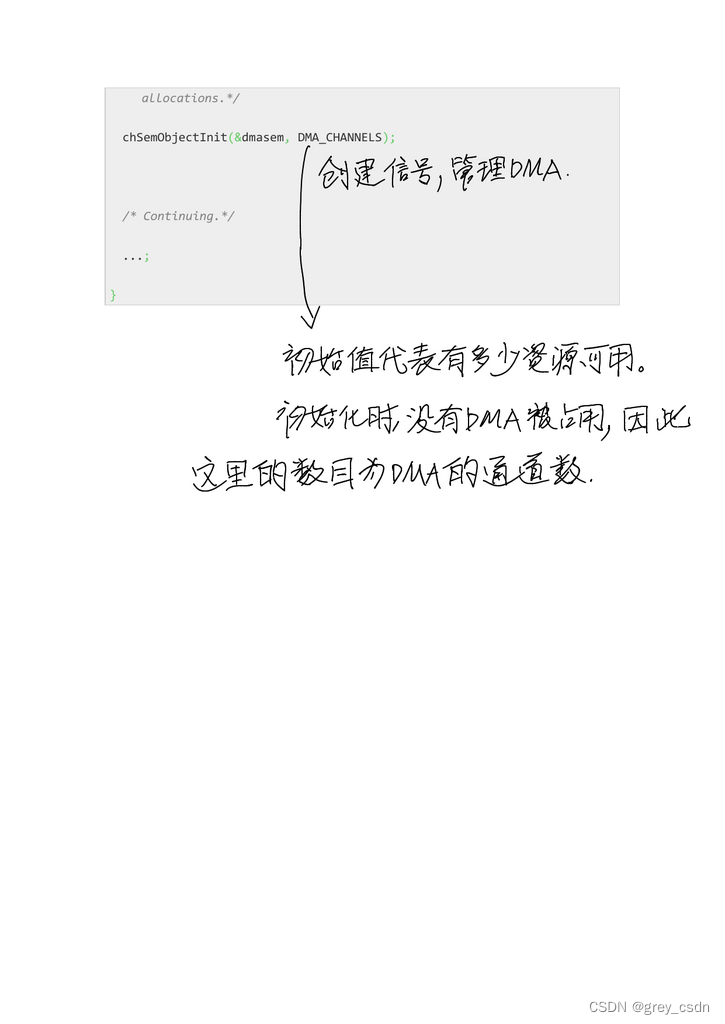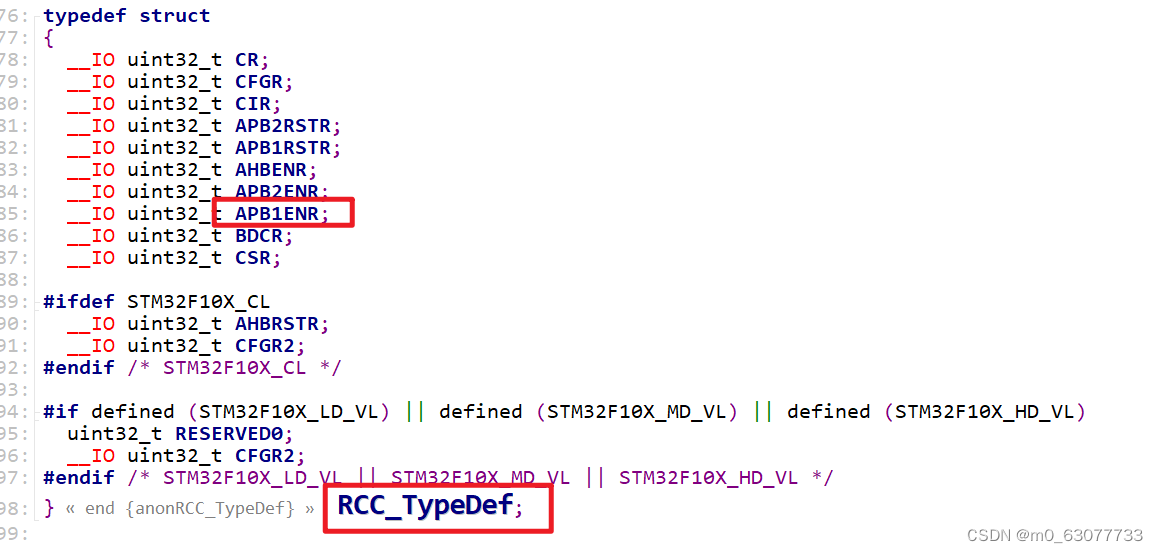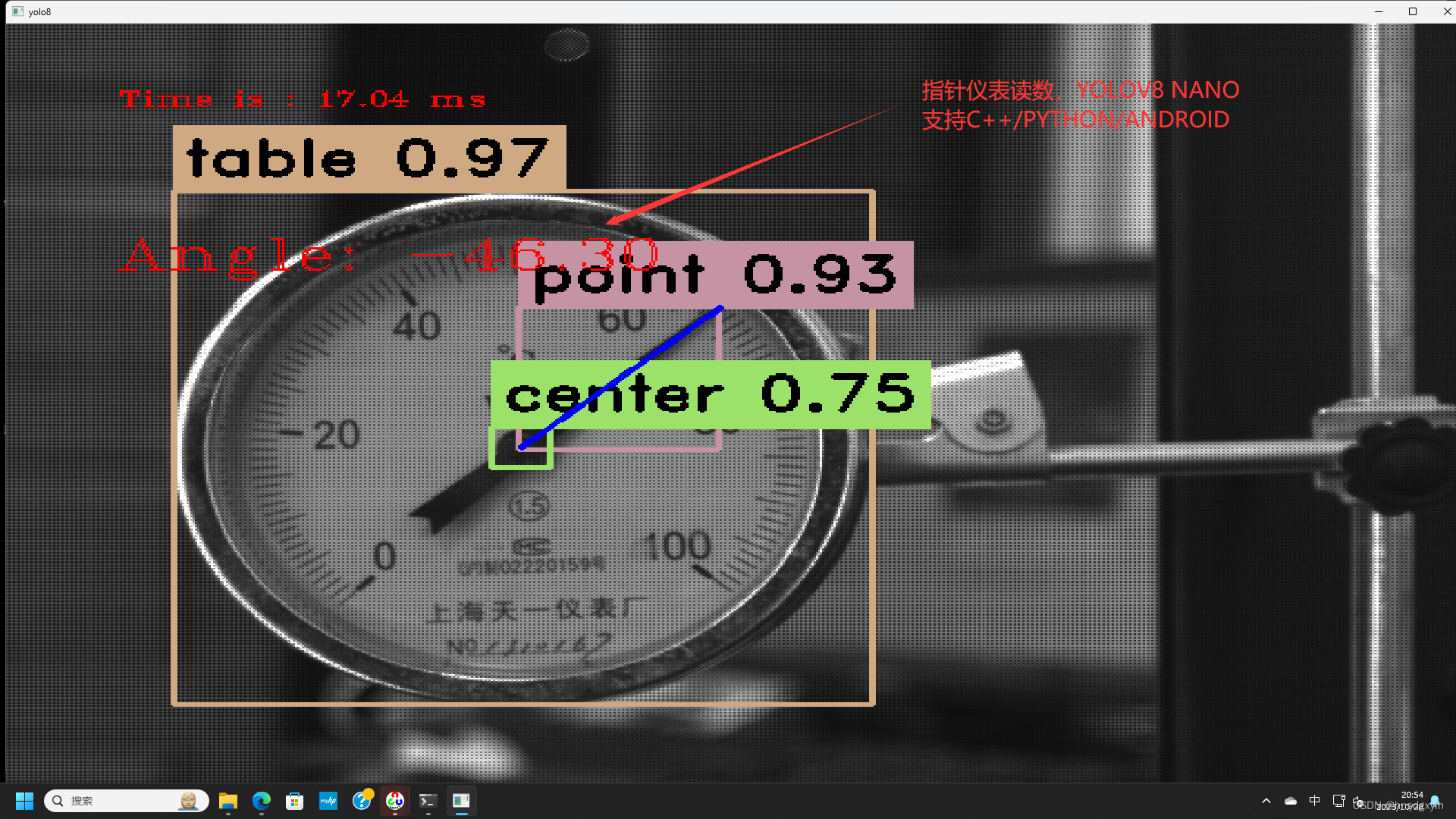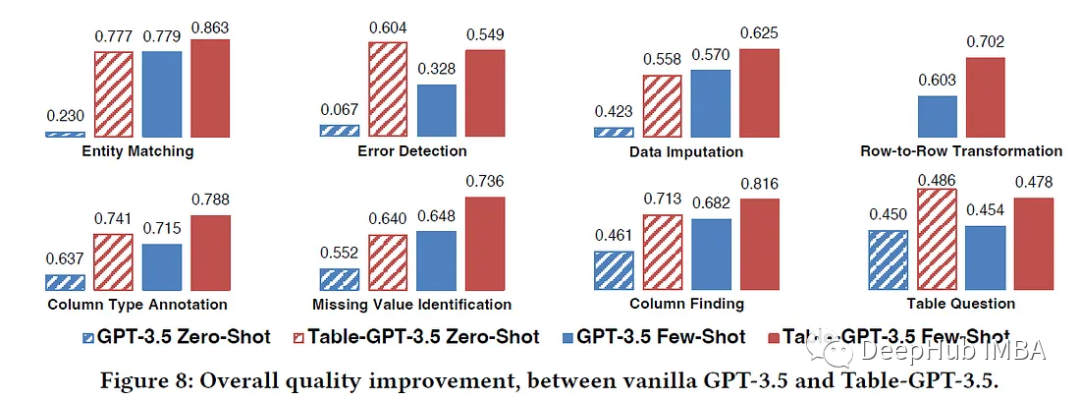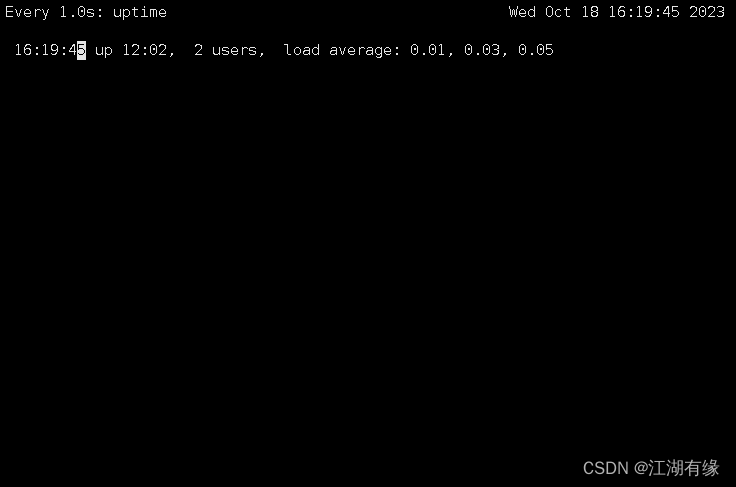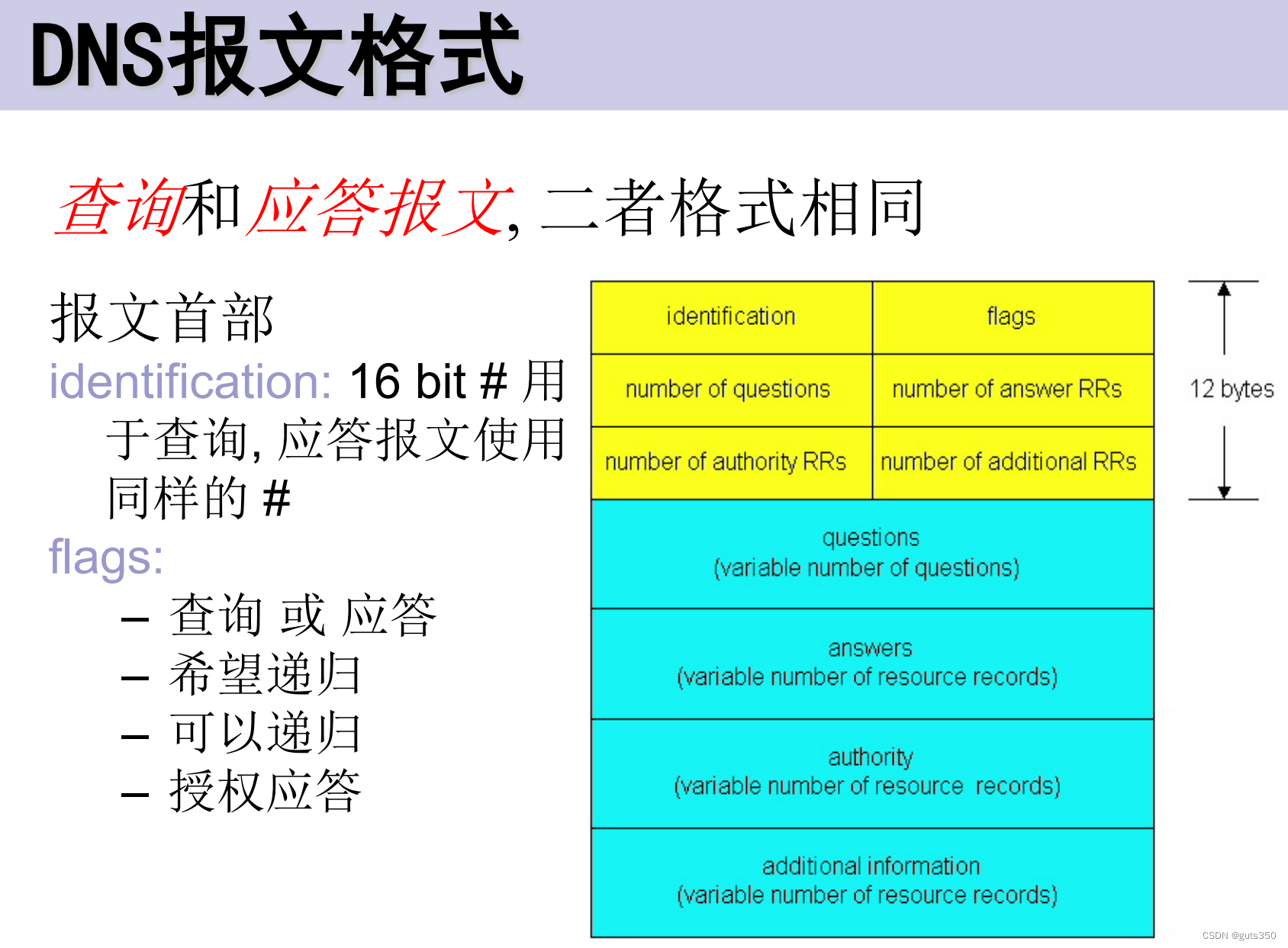q
1 概述
1.1 定义
Flume 是Cloudera 提供的一个高可用的,高可靠的,分布式的海量日志采集、聚合和传输的系统。Flume 基于流式架构,灵活简单。
Flume最主要的作用就是,实时读取服务器本地磁盘的数据,将数据写入到HDFS。

1.2 架构

1.2.1 Agent
Agent是一个JVM进程,它以事件的形式将数据从源头送至目的。
Agent主要有3个部分组成,Source、Channel、Sink。
1.2.2 Source
Source是负责接收数据到Flume Agent的组件。Source组件可以处理各种类型、各种格式的日志数据,包括avro、thrift、exec、jms、spooling directory、netcat、taildir、sequence generator、syslog、http、legacy。
1.2.3 Sink
Sink 不断地轮询 Channel 中的事件且批量地移除它们,并将这些事件批量写入到存储或索引系统、或者被发送到另一个 Flume Agent。
Sink 组件目的地包括 hdfs、logger、avro、thrift、ipc、file、HBase、solr、自定义。
1.2.4 Channel
Channel是位于Source 和Sink 之间的缓冲区。因此,Channel允许 Source和Sink 运作在不同的速率上。Channel 是线程安全的,可以同时处理几个 Source 的写入操作和几个Sink的读取操作。
Flume自带两种Channel:Memory Channel和 File Channel。
Memory Channel是内存中的队列。Memory Channel在不需要关心数据丢失的情景下适用。如果需要关心数据丢失,那么 Memory Channel就不应该使用,因为程序死亡、机器宕机或者重启都会导致数据丢失。
File Channel 将所有事件写到磁盘。因此在程序关闭或机器宕机的情况下不会丢失数据。
1.2.5 Event
传输单元,Flume 数据传输的基本单元,以 Event 的形式将数据从源头送至目的地。
Event由Header 和Body 两部分组成,Header用来存放该 event的一些属性,为K-V 结构,Body用来存放该条数据,形式为字节数组。

2 Flume基本操作
2.1 安装部署
http://www.apache.org/dyn/closer.lua/flume/1.9.0/apache-flume-1.9.0-tar.gz
直接解压
将lib文件夹下的guava-11.0.2.jar删除以兼容 Hadoop 3.1.3
2.2 案例
2.2.1 监控端口数据官方案例
Flume 1.9.0 User Guide — Apache Flume
使用 Flume监听一个端口,收集该端口数据,并打印到控制台

(1)安装netcat工具
[atguigu@hadoop102 software]$ sudo yum install -y nc
(2)判断4444端口是否被占用
[atguigu@hadoop102 flume-telnet]$ sudo netstat -nlp | grep 4444
(3)创建Flume Agent配置文件flume-netcat-logger.conf
(4)在flume目录下创建 job文件夹并进入job文件夹。
[atguigu@hadoop102 flume]$ mkdir job
[atguigu@hadoop102 flume]$ cd job/
(5)在job文件夹下创建 Flume Agent配置文件flume-netcat-logger.conf。
[atguigu@hadoop102 job]$ vim flume-netcat-logger.conf
(6)在flume-netcat-logger.conf文件中添加如下内容# name the components on this agent a1.sources = r1 a1.sinks = k1 a1.channels = c1# Describe/configure the source a1.sources.r1.type = netcat a1.sources.r1.bind = localhost a1.sources.r1.port = 4444# Describe the sink a1.sinks.k1.type = logger# Use a channel which buffers events in memory a1.channels.c1.type = memory a1.channels.c1.capacity = 1000 a1.channels.c1.transactionCapacity = 100# Bind the source and sink to the channel a1.sources.r1.channels = c1 a1.sinks.k1.channel = c1
原神启动
bin/flume-ng agent --conf conf/ --name a1 --conf-file job/flume-netcat-logger.conf -Dflume.root.logger=INFO,console
or
bin/flume-ng agent -c conf/ -n a1 -f job/flume-netcat-logger.conf -flume.root.logger=INFO,console --conf/-c:表示配置文件存储在 conf/目录 --name/-n:表示给 agent 起名为 a1 --conf-file/-f:flume 本次启动读取的配置文件是在 job 文件夹下的 flume-telnet.conf文件。 -Dflume.root.logger=INFO,console :-D 表示 flume 运行时动态修改 flume.root.logge参数属性值,并将控制台日志打印级别设置为 INFO 级别。日志级别包括:log、info、warn、error。 另一台nc启动
nc localhost 4444
然后发消息
2023-10-25 14:03:53,633 (SinkRunner-PollingRunner-DefaultSinkProcessor) [INFO - org.apache.flume.sink.LoggerSink.process(LoggerSink.java:95)] Event: { headers:{} body: 30
2.2.2 实时监控单个追加文件
实时监控 Hive 日志,并上传到HDFS中
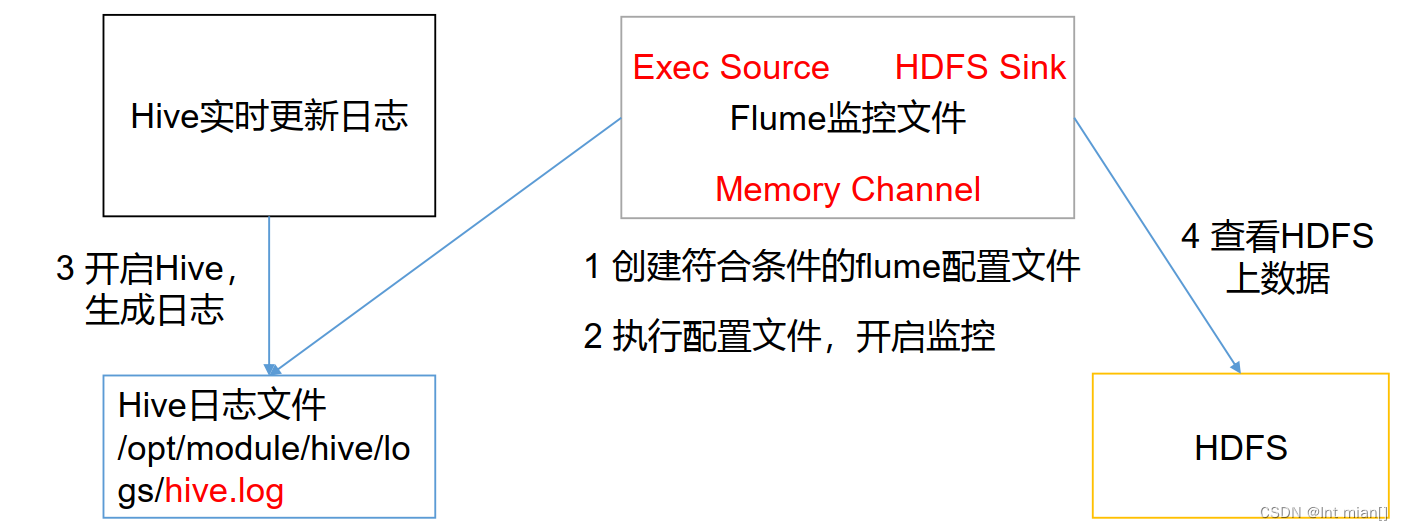
开启hadoop集群
start-all.sh
开启hive
/export/servers/hive/bin/hive --service metastore & nohup /export/servers/hive/bin/hive
vim flume-file-hdfs.conf
# Name the components on this agent
a2.sources = r2
a2.sinks = k2
a2.channels = c2# Describe/configure the source
a2.sources.r2.type = exec
a2.sources.r2.command = tail -F /export/server/hive/logs/hive.log(要监控拉取的文件)# Describe the sink
a2.sinks.k2.type = hdfs
a2.sinks.k2.hdfs.path = hdfs://hadoop1:8020/flume/%Y%m%d/%H(这里的端口要和hadoop配置里hdfs的一样!!!!!!!!!)
#上传文件的前缀
a2.sinks.k2.hdfs.filePrefix = logs-
#是否按照时间滚动文件夹
a2.sinks.k2.hdfs.round = true
#多少时间单位创建一个新的文件夹
a2.sinks.k2.hdfs.roundValue = 1
#重新定义时间单位
a2.sinks.k2.hdfs.roundUnit = hour
#是否使用本地时间戳
a2.sinks.k2.hdfs.useLocalTimeStamp = true
#积攒多少个Event 才flush 到HDFS一次
a2.sinks.k2.hdfs.batchSize = 100
#设置文件类型,可支持压缩
a2.sinks.k2.hdfs.fileType = DataStream
#多久生成一个新的文件
a2.sinks.k2.hdfs.rollInterval = 60
#设置每个文件的滚动大小
a2.sinks.k2.hdfs.rollSize = 134217700
#文件的滚动与Event数量无关
a2.sinks.k2.hdfs.rollCount = 0# Use a channel which buffers events in memory
a2.channels.c2.type = memory
a2.channels.c2.capacity = 1000
a2.channels.c2.transactionCapacity = 100# Bind the source and sink to the channel
a2.sources.r2.channels = c2
a2.sinks.k2.channel = c2
启动
bin/flume-ng agent -n a2 -c conf -f job/flume-file-hdfs.conf
ctrl+Z退出
在HDFS上查看文件。
2.2.3 实时监控目录下多个新文件
使用Flume监听整个目录的文件,并上传至 HDFS

在使用 Spooling Directory Source 时,不要在监控目录中创建并持续修改文件;上传完成的文件会以.COMPLETED结尾;被监控文件夹每 500毫秒扫描一次文件变动。
bin/flume-ng agent --conf conf/ --name a3 --conf-file job/flume-dir-hdfs.confa3.sources = r3
a3.sinks = k3
a3.channels = c3# Describe/configure the source
a3.sources.r3.type = spooldir
a3.sources.r3.spoolDir = /export/server/flume/upload
a3.sources.r3.fileSuffix = .COMPLETED
a3.sources.r3.fileHeader = true
#忽略所有以.tmp结尾的文件,不上传
a3.sources.r3.ignorePattern = ([^ ]*\.tmp)# Describe the sink
a3.sinks.k3.type = hdfs
a3.sinks.k3.hdfs.path = hdfs://hadoop1:8020/flume/upload/%Y%m%d/%H
#上传文件的前缀:
a3.sinks.k3.hdfs.filePrefix = upload-
#是否按照时间滚动文件夹
a3.sinks.k3.hdfs.round = true
#多少时间单位创建一个新的文件夹
a3.sinks.k3.hdfs.roundValue = 1
#重新定义时间单位
a3.sinks.k3.hdfs.roundUnit = hour
#是否使用本地时间戳
a3.sinks.k3.hdfs.useLocalTimeStamp = true
#积攒多少个Event 才flush 到HDFS一次
a3.sinks.k3.hdfs.batchSize = 100
#设置文件类型,可支持压缩
a3.sinks.k3.hdfs.fileType = DataStream
#多久生成一个新的文件
a3.sinks.k3.hdfs.rollInterval = 60
#设置每个文件的滚动大小大概是 128M
a3.sinks.k3.hdfs.rollSize = 134217700
#文件的滚动与Event数量无关
a3.sinks.k3.hdfs.rollCount = 0# Use a channel which buffers events in memory
a3.channels.c3.type = memory
a3.channels.c3.capacity = 1000
a3.channels.c3.transactionCapacity = 100# Bind the source and sink to the channel
a3.sources.r3.channels = c3
a3.sinks.k3.channel = c3在/opt/module/flume 目录下创建upload文件夹
向 upload文件夹中添加文件

2.2.4 实时监控目录下的多个追加文件
Exec source适用于监控一个实时追加的文件,不能实现断点续传;Spooldir Source适合用于同步新文件,但不适合对实时追加日志的文件进行监听并同步;而Taildir Source适合用于监听多个实时追加的文件,并且能够实现断点续传。

a3.sources = r3
a3.sinks = k3
a3.channels = c3 # Describe/configure the source
a3.sources.r3.type = TAILDIR
a3.sources.r3.positionFile = /opt/module/flume/tail_dir.json
a3.sources.r3.filegroups = f1 f2
a3.sources.r3.filegroups.f1 = /opt/module/flume/files/.*file.*
a3.sources.r3.filegroups.f2 = /opt/module/flume/files2/.*log.* # Describe the sink
a3.sinks.k3.type = hdfs
a3.sinks.k3.hdfs.path =
hdfs://hadoop102:9820/flume/upload2/%Y%m%d/%H
#上传文件的前缀
a3.sinks.k3.hdfs.filePrefix = upload-
#是否按照时间滚动文件夹
a3.sinks.k3.hdfs.round = true
#多少时间单位创建一个新的文件夹
a3.sinks.k3.hdfs.roundValue = 1
#重新定义时间单位
a3.sinks.k3.hdfs.roundUnit = hour
#是否使用本地时间戳
a3.sinks.k3.hdfs.useLocalTimeStamp = true
#积攒多少个Event 才flush 到HDFS一次
a3.sinks.k3.hdfs.batchSize = 100
#设置文件类型,可支持压缩
a3.sinks.k3.hdfs.fileType = DataStream
#多久生成一个新的文件
a3.sinks.k3.hdfs.rollInterval = 60
#设置每个文件的滚动大小大概是128M
a3.sinks.k3.hdfs.rollSize = 134217700
#文件的滚动与Event数量无关
a3.sinks.k3.hdfs.rollCount = 0 # Use a channel which buffers events in memory
a3.channels.c3.type = memory
a3.channels.c3.capacity = 1000
a3.channels.c3.transactionCapacity = 100 # Bind the source and sink to the channel
a3.sources.r3.channels = c3
a3.sinks.k3.channel = c3Taildir 说明:
Taildir Source维护了一个 json格式的position File,其会定期的往position File中更新每个文件读取到的最新的位置,因此能够实现断点续传。Position File的格式如下
3 Flume 高级


